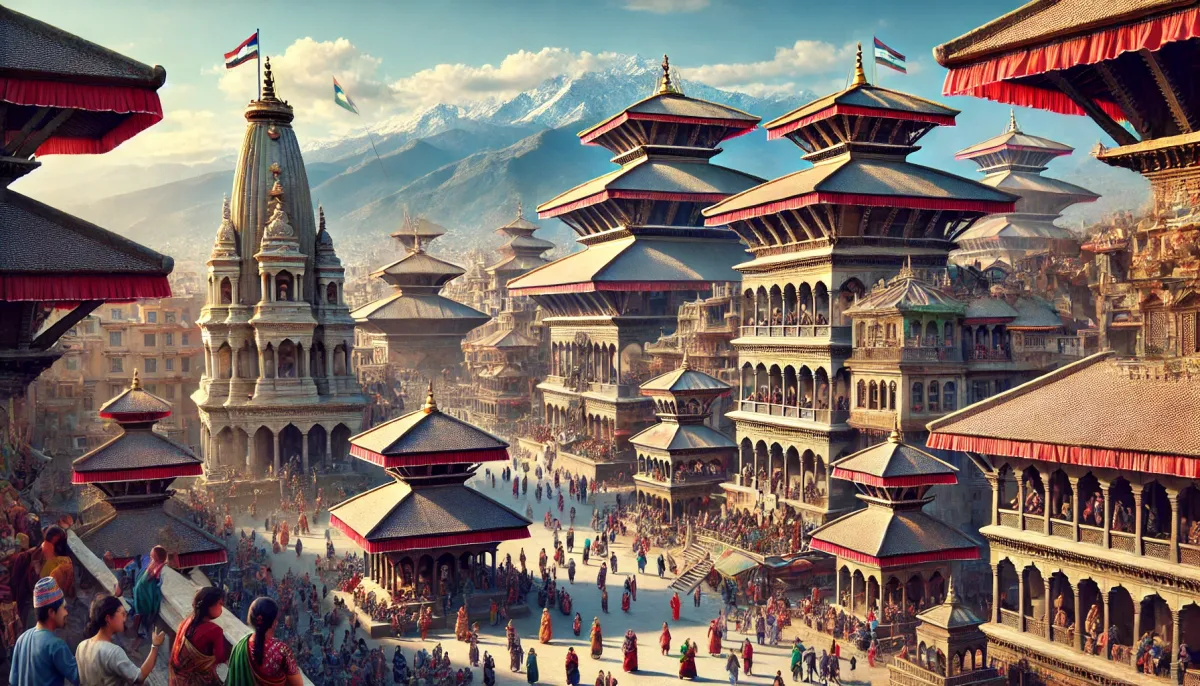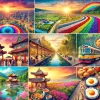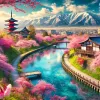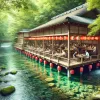Hi everyone, Mark here! I’m a seasoned backpacker from the US, and my passion lies in exploring the vibrant tapestry of Asian cities. For years, I've been captivated by the unique blend of ancient traditions and modern life found in Asia, and today, I’m sharing my unforgettable experiences in Nepal, specifically Kathmandu. Many people ask if places like Nepal are "backward," but I see it differently. I see vibrant culture, a rich history, and an energy that's unlike anywhere else in the world.
Kathmandu: A Cultural Tapestry Woven Through Time
My recent trip to Kathmandu, four years after my first visit, was even more enriching. From the moment I stepped foot in this ancient city, I was immersed in a sensory overload of sights, sounds, and experiences. Whether you find it “backward” or not, Kathmandu undeniably offers a fresh perspective and a cultural immersion unlike any other.
I had the incredible opportunity to witness a traditional Nepalese wedding – a truly unforgettable spectacle! The vibrant colors, the bustling atmosphere, and the sheer joy of the celebration were captivating. It was a world away from anything I'd ever experienced before. It reminded me, in a way, of Taiwan 30 years ago, with motorbikes weaving through the crowds.
The wedding ceremony itself showcased a fascinating aspect of Nepalese tradition – the perceived lower status of women, where the bride's family provides substantial gifts to the groom's family. In some cases, the bride's father even washes the groom's feet, symbolizing a complete severance of the daughter's ties to her birth family. These customs, though contrasting to Western norms, offered a powerful insight into Nepalese social dynamics.
The wedding festivities were held under elaborately decorated canopies erected in open spaces, creating a vibrant and joyous atmosphere. It was a truly remarkable event that provided a unique glimpse into Nepalese culture. I can honestly say that experiencing a Nepalese wedding is something few people ever get the chance to do!
The Unique Rituals of Nepalese Marriage: A Deeper Dive
Nepalese culture is filled with surprising customs. One of the most unique traditions I encountered was the "少女婚" (Shau-nu Hun), or "Rohani" wedding. This ceremony involves marrying young girls, aged two to puberty, to a local fruit called a Rohani. This isn't a symbolic marriage in the way we might understand it in the West; it's a crucial part of their cultural practices. Only after this ritual can the girl have a proper wedding ceremony later in life. It was truly eye-opening to witness this unique tradition and learn about its significance in the community.
This practice, along with the "black room" ritual marking a girl's menstruation, is deeply rooted in the cultural beliefs and practices of Nepal. These rituals are designed to prepare young girls for adulthood and are a testament to Nepal's rich and unique traditions. Following the Rohani wedding, the fruit is wrapped in red cloth and the girl resumes her normal life. Later, upon the onset of her first menstruation, the girl undergoes a purification ritual, spending eleven days secluded in a dark room. Only on the twelfth day, at sunrise, does she emerge for a cleansing ceremony, symbolizing her transition to womanhood.
Kathmandu's Durbar Square: A Journey Through History and Religion
Moving beyond the personal experiences, I wanted to explore Kathmandu’s rich historical sites. Durbar Square, the heart of the old city, is a stunning showcase of architecture and religion. Its history stretches back to the 12th century, with most of the structures dating from the 16th to 19th centuries. The square is divided into sections, including the Kumari Temple, dedicated to the "living goddess". The religious atmosphere is palpable, blending elements of Hinduism and Buddhism, reminiscent of Angkor Wat. The architecture is a beautiful mixture of styles, reflecting the many layers of history and influence on this city.
The square also houses the old royal palace, a testament to Kathmandu’s regal past. The numerous temples and shrines dedicated to various Hindu deities, such as Shiva, Vishnu, and Ganesha, are a reminder of the profound religious beliefs that shape this city's identity.
The architecture blends Hindu and Buddhist influences, reflecting the rich religious diversity of Nepal. This religious fusion is truly captivating. It is a beautiful juxtaposition of cultures. And it's evident that the religious beliefs and practices are deeply woven into the fabric of daily life.
The remnants of the 2015 earthquake are visible throughout the square, a stark reminder of the fragility of even the most ancient structures. Despite the damage, the spirit of Kathmandu remains strong, and the ongoing restoration efforts showcase the city's resilience.
Hanuman Dhoka Palace: A Symbol of Resilience
A short distance from Durbar Square stands Hanuman Dhoka Palace, another testament to Kathmandu's rich history. Built in the 13th century, with most of its structures dating to the 17th century, this vast palace complex consists of nearly ten courtyards, each with a distinct purpose. The name itself, “Hanuman Dhoka” references the monkey god Hanuman, a symbol often found at the entrance to Hindu temples, symbolizing protection and strength. The palace itself served as a center for various royal ceremonies and religious practices. The 2015 earthquake significantly damaged many parts of the palace, showcasing the impact of nature's destructive power.
Kathmandu: Beyond the Tourist Trail
Kathmandu is more than just its ancient squares and temples. The city pulsates with a chaotic energy, a vibrant mix of cultures, and a deeply spiritual atmosphere. Despite its challenges – poverty, occasional power outages, and traffic congestion – Kathmandu's unique charm draws visitors back time and time again. It's this very chaos, this vibrant blend of cultures and beliefs, that make Kathmandu so captivating.
The city is a melting pot of diverse ethnic groups and nationalities. I found the people, despite their poverty, to be incredibly resilient and welcoming. The bustling markets overflow with colorful textiles, spices, and handicrafts, while the mountain backdrop provides a breathtaking backdrop to the urban sprawl. The happiness index here is very high. While it has its problems, people seem to be genuinely happy and content with their lives.
One surprising aspect was the relatively low number of beggars, considering the prevalence of poverty. This, combined with the affordable prices and the thrill of bargaining in the markets, added to the unique experience.
A Table Summarizing Key Features of Kathmandu:
| Feature | Description |
|---|---|
| Location | Kathmandu Valley, Nepal, nestled in the Himalayas. |
| Altitude | Over 1,300 meters (4,265 feet) above sea level |
| Climate | Pleasant, temperate climate due to its location in a valley. |
| Religion | Predominantly Hindu, with significant Buddhist and other religious minorities. |
| History | Rich history dating back centuries, with influences from various empires and cultures. |
| Architecture | Blend of Hindu and Buddhist styles, reflected in the numerous temples and palaces. |
| Culture | Vibrant and diverse, with unique traditions and customs. |
| Cuisine | Distinctive flavors, reflecting the local ingredients and cultural influences. |
Golden Temple (Hiranya Varna Mahavihara): A Glimpse of Spiritual Serenity
My exploration of Kathmandu culminated in a visit to the Golden Temple (Hiranya Varna Mahavihara) in Patan. Located near Durbar Square, this stunning temple, dating back to the 12th century, is renowned for its exquisite metalwork. The three-tiered golden roof, gleaming under the sun, is truly breathtaking. Inside, the temple is filled with intricate carvings and sculptures, a blend of Buddhist and Hindu iconography. The atmosphere is profoundly spiritual, even for a non-believer like myself. This blend of styles is unique to Nepal.
The temple’s rules, prohibiting shoes and leather items, add to its unique character. The blend of styles, reflecting a unique synthesis of Buddhist and Hindu beliefs, is a testament to the religious syncretism that characterizes Nepal. This truly is a breathtaking testament to Nepal's rich culture and history, and it's a must-see for any visitor.
Conclusion: Why You Should Visit Nepal
Nepal, and Kathmandu in particular, is a place that will stay with you long after you leave. It's a land of contrasts, where ancient traditions coexist with modern life, where breathtaking mountain landscapes meet bustling city streets, and where the spiritual energy is palpable. While not without its challenges, Nepal offers a unique and rewarding travel experience that will broaden your horizons and leave a lasting impression on your soul. Go explore!







